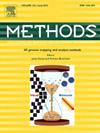Strain promoted click labeling of oligonucleotides on solid-phase support
IF 4.3
3区 生物学
Q1 BIOCHEMICAL RESEARCH METHODS
引用次数: 0
Abstract
Chemically modified oligonucleotides (ONs) are essential tools in molecular biology, diagnostics, and therapeutics. Strain-promoted azide–alkyne cycloaddition (SPAAC) offers an efficient and bioorthogonal method for ON functionalization. While SPAAC reactions on solid-phase support provide distinct advantages, particularly for the incorporation of lipophilic labels, factors influencing their efficiency remain poorly characterized. The interplay between the physicochemical properties of the modifying molecule, the nature of the solid support, and the labeling site within the ON chain has not been systematically evaluated. In this study, we systematically investigate how modifying molecule properties (size, polarity) and concentration, solid support type, labeling site within the ON chain, and reaction time influence efficiency of labeling. Our findings demonstrate that while polar modifying molecules react efficiently across all solid supports, lipophilic molecules can exhibit reduced reactivity on glass-based supports, particularly in positions close to the 3́-end of the oligonucleotide attached to the support. We further show that conjugation at the 5′-terminus consistently yields the highest efficiencies, with a gradual decline observed as the modification site approaches the 3′-end. A 1 mM concentration of labeling reagent was sufficient to achieve high yields on polystyrene support for all labels and on CPG 500 for the polar labels. The size of the modifying molecule had a lesser effect compared to other factors. The method also benefits from recovery and reusability of the unreacted label. These results enable the rational design of efficient ON labeling protocols on solid-phase support while minimizing reagent consumption, contributing to both cost-effectiveness and environmental sustainability.

应变促进在固相载体上的寡核苷酸点击标记。
化学修饰的寡核苷酸(ONs)是分子生物学、诊断和治疗学中必不可少的工具。菌株促进叠氮化物-炔环加成(SPAAC)是一种高效的生物正交ON官能化方法。虽然固相载体上的SPAAC反应具有明显的优势,特别是对于亲脂性标签的掺入,但影响其效率的因素仍然缺乏表征。修饰分子的物理化学性质、固体载体的性质和ON链内的标记位点之间的相互作用尚未得到系统的评估。在本研究中,我们系统地研究了修饰分子性质(大小、极性)和浓度、固体载体类型、ON链内标记位点和反应时间对标记效率的影响。我们的研究结果表明,虽然极性修饰分子在所有固体载体上都能有效地反应,但亲脂分子在玻璃基载体上的反应性会降低,特别是在靠近载体上的寡核苷酸3端的位置。我们进一步表明,在5‘端偶联始终产生最高的效率,随着修饰位点接近3’端,观察到逐渐下降。1 mM浓度的标记试剂足以在聚苯乙烯载体上获得所有标签的高收率,在CPG 500上获得极性标签。与其他因素相比,修饰分子的大小影响较小。该方法还受益于未反应标签的回收和可重用性。这些结果使得在固相载体上合理设计高效的ON标记协议,同时最大限度地减少试剂消耗,有助于成本效益和环境可持续性。
本文章由计算机程序翻译,如有差异,请以英文原文为准。
求助全文
约1分钟内获得全文
求助全文
来源期刊

Methods
生物-生化研究方法
CiteScore
9.80
自引率
2.10%
发文量
222
审稿时长
11.3 weeks
期刊介绍:
Methods focuses on rapidly developing techniques in the experimental biological and medical sciences.
Each topical issue, organized by a guest editor who is an expert in the area covered, consists solely of invited quality articles by specialist authors, many of them reviews. Issues are devoted to specific technical approaches with emphasis on clear detailed descriptions of protocols that allow them to be reproduced easily. The background information provided enables researchers to understand the principles underlying the methods; other helpful sections include comparisons of alternative methods giving the advantages and disadvantages of particular methods, guidance on avoiding potential pitfalls, and suggestions for troubleshooting.
 求助内容:
求助内容: 应助结果提醒方式:
应助结果提醒方式:


